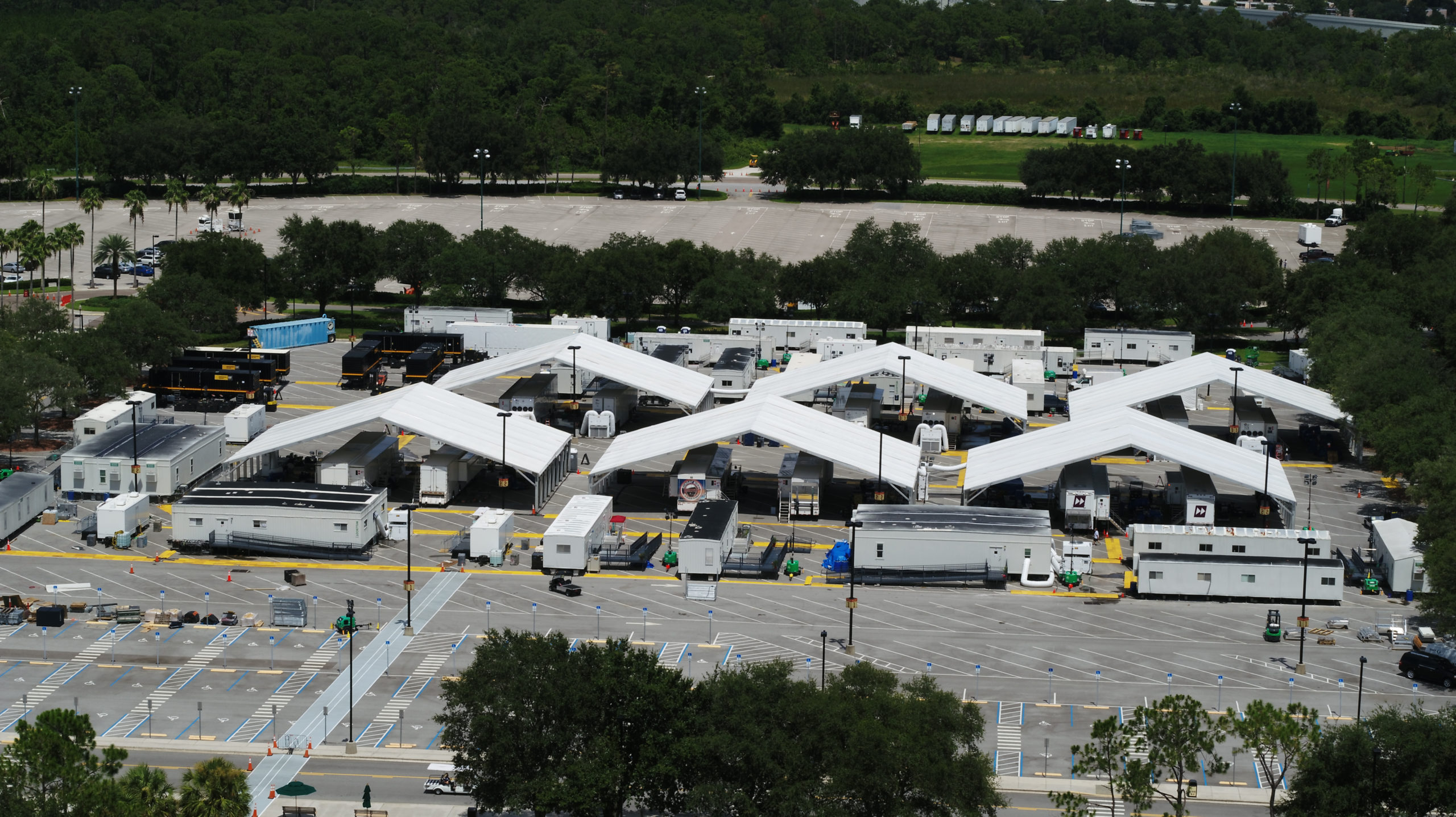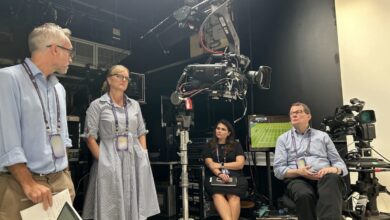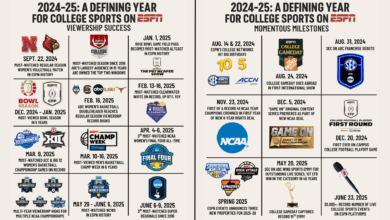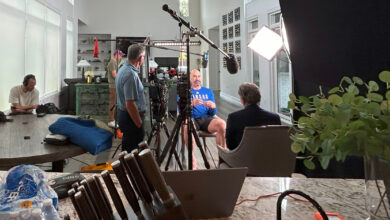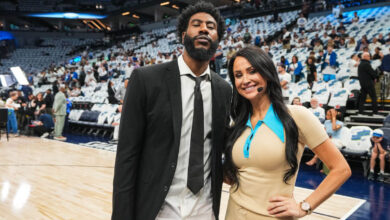“It’s both fun and demanding all at once.”
Rodney Vaughn is producing two games in ESPN's NBA tripleheader from Florida tonight; here's his approach to live storytelling under unique circumstances
Tonight’s ESPN NBA Friday game coverage features an NBA tripleheader with six playoff-bound teams — Miami Heat vs. Indiana Pacers at 4 ET, Oklahoma City Thunder vs. LA Clippers at 6:30, and Philadelphia 76ers vs. Houston Rockets at 9.
All three matchups will be produced from the ESPN Wide World of Sports Complex in Lake Buena Vista, Fla.— home of the NBA season. The team of play-by-play commentator Mark Jones, analyst Doris Burke and reporter Rachel Nichols will call both the 4 p.m. and 9 p.m. games. Jones provides a preview in the video above.
Mike Breen, Mark Jackson, Lisa Salters and producer Ian Gruca will cover the Thunder-Clippers game starting at 6:30.
Rodney Vaughn will produce the 4 and 9 p.m. games from ESPN’s production compound in Florida. Vaughn answered a few questions on the preparation, innovation, and uniqueness of producing two NBA games in one day, specifically as it pertains to the circumstances of this season.
What challenges or opportunities do you face with producing a doubleheader in a single location?
There are a few challenges to producing a doubleheader in one location. Turnaround time between games is the most obvious challenge. That’s even more of a challenge in the COVID-19 environment. The court area and benches have to be cleaned after the first game. The NBA has done a great job of taking every precaution to make sure players, coaches, and event staff are safe in all venues with multiple games taking place daily.
The days are long; they are on-site hours before the first game and have a short amount of time between games. So, managing crew energy levels is probably the next biggest hurdle to overcome.
– ESPN NBA producer Rodney Vaughn regarding producing multiple games in one day
Another thing I would point to is making sure that the crew is fresh and engaged. The days are long; they are on-site hours before the first game and have a short amount of time between games. So, managing crew energy levels is probably the next biggest hurdle to overcome.
Have you ever produced a doubleheader? If so, what was that experience like, and how would this compare to that experience?
Being here in the NBA’s Florida campus, it seems that producing doubleheaders is par for the course. Our programming group, along with the NBA, gave us a great schedule with a number of doubleheaders.
This will be my second time in 12 days producing a doubleheader on ESPN. It’s both fun and demanding all at once. You attempt to focus on four teams and a number of storylines. While one game may be exciting and have an incredible finish, you also have to prepare for just the opposite.
Before producing these NBA doubleheaders, I also had the pleasure of producing college basketball doubleheaders at conference tournaments. The NBA games are more competitive in most cases.
How does preparation for producing two games in one day compare to single-game preparation?
The amount of preparation basically doubles. There are elements to edit for both telecasts, more game notes to read through along with many more team articles. There’s more communication with team PR to schedule interviews and coach meetings. Juggling those schedules on the same day can be a task.
My production meeting with play-by-play, analysts, and game director will run a bit longer than normal. While most of the tasks are normal for game prep, it’s just more information and planning, with less time.
What will the workflow be in between games?
The first game will end, once we are off-air, we will take note of the time day then confer about our next scheduled tip time. We would release the crew for a meal break; everyone needs to step away from their positions to regroup, whether inside the arena or in the production truck.
Most importantly, after the break period is to begin, we have to load elements for the second game efficiently. That would include sale, promos, soundbites, etc. We also make sure that we are providing any requested studio shots for Game 2, and then eventually preparing to rehearse what would become our game open.
Some of these lessons, if not all, will be communicated to other fall sports as they return. – Vaughn on what producing games on the NBA’s Florida campus has taught
What is the crew looking forward to accomplishing in this experience that can be transferred to future initiatives?
Our entire production staff (Operations, Crewing, and Production) has looked at this entire situation as a learning opportunity. We’ve learned how to first work with safety at the forefront of everything we do. Technically we’ve achieved great things with the size and scope of the TV compound. From a production standpoint, we changed what our production footprint looks like — fewer operated cameras, more robotic cameras. We’ve looked to gather more behind-the-scenes footage of the players’ unique situations. Some of these lessons, if not all, will be communicated to other fall sports as they return.
